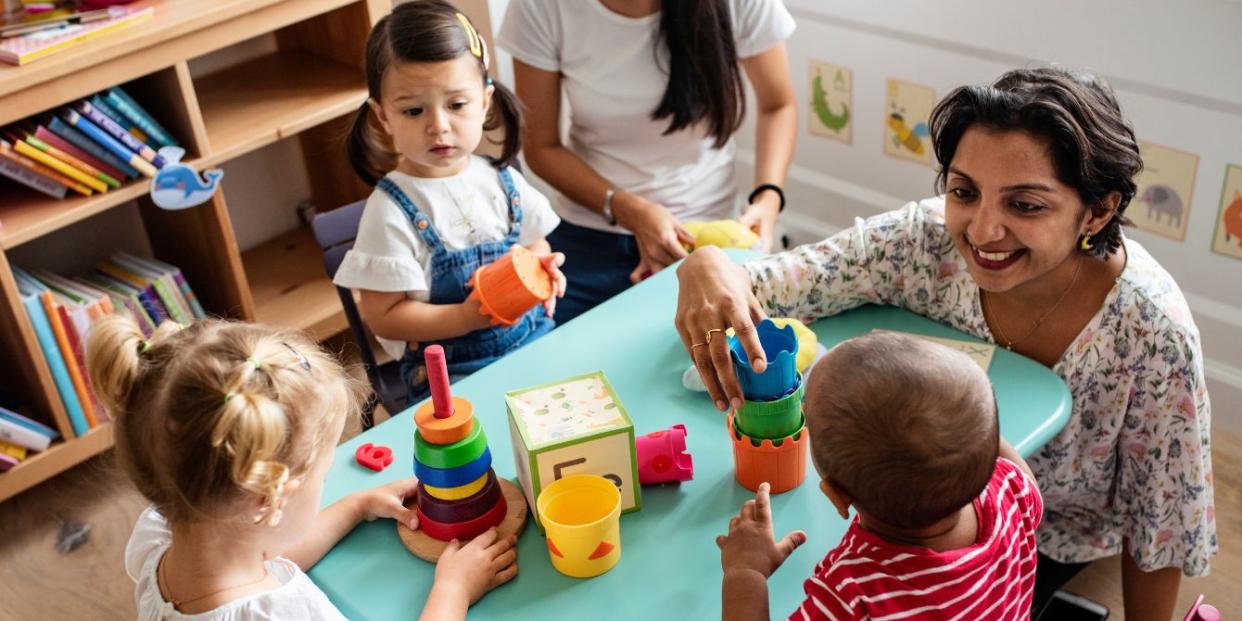Childcare is not considered ‘affordable’ in any US state—and here’s where it’s most expensive

Taking care of our kiddos doesn’t come cheap, to put it lightly—and if you’re feeling the burn, you’re far from alone. Childcare costs are expensive—and on the rise across the country, especially after the childcare cliff—but the prices also vary a lot based on where you live and what type of childcare provider you choose.
A new report finds that, on average, families dole out more than $11,000 a year per child in center-based care. That means families spend approximately 13% of their income in order for their child to receive care from a daycare center. On the flip side, home-based care is about $8,500 a year per kiddo—that’s about 10% of the average family’s income each year.
But what’s actually considered “affordable” childcare for most US families is far less—highlighting an urgent need for greater federal investments in childcare.
The data comes from ChildCare Aware’s Child Care Data Center and the U.S. Census, and was analyzed by GOBankingRates. The costs assessed were care for infants, toddlers and 4-year-olds, and the report breaks down the states where childcare is most expensive and most affordable.
Which states have the most expensive childcare costs?
According to the report, the priciest states for care were New Mexico, California, New Jersey, North Carolina, and Washington. States with the most affordable care included North and South Dakota, New Hampshire, Utah, Maryland and Missouri.
In South Dakota, for example, the median family income is $81,470. Center-based care costs $7,176—8.81% of a family’s income—while home-based care runs $5,429.
In New Mexico, the median family income is $59,007. There, center-based daycare costs $9,243 a year—taking up 15.66% of income—and home-based care costs $8,101.
According to the U.S. Department of Health and Human Services, “affordable” childcare is defined as no more than 7% of a person’s income. Based on that criteria, not a single state provides affordable childcare for residents.
A separate 2023 Care.com survey of 3,000 parents found that 67% of parents are spending 20% or more of their annual household income on childcare—up from 51% of parents in 2022. Also, 89% of parents pay 10% or more of their yearly income on childcare, and that’s up from 72% of parents in 2022. It’s clear that care costs are becoming a bigger line item on families’ budgets, with no end in sight.
You can see the full breakdown of childcare costs in every state here.
How more spending on childcare affects women in the workforce
The average child care payment went up 32% since 2019, the Bank of America Institute reported, and the childcare cliff (the ending of pandemic-era childcare support in 2023) surely impacted childcare costs and accessibility for millions of families across the country.
Even though households seem to be saving more money in general since 2019, families who have to shoulder childcare costs have been spending at a slower pace since May 2023, the report showed.
The costs of care surely have a significant ripple effect for women in particular. The high prices could be forcing some people to leave work to care for their kids. And though the report didn’t evaluate sex or gender to see if women were bearing the brunt of the workforce exit, it’s likely that this is the case, per Motherly’s previous reporting.
Wendy Chun-Hoon, Women’s Bureau Director at the National Database of Childcare Prices at the Department of Labor, acknowledges this direct effect when it comes to women’s workforce participation. “[W]here childcare prices are high—mothers are less likely to be employed outside the home, even in places with higher wages,” she says in a statement. “Reducing out-of-pocket childcare expenses for families would support higher employment, particularly among women, lift more families out of poverty, and reduce disparities in employment and early care and education.”

